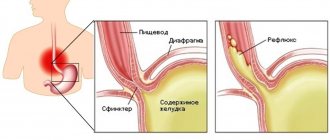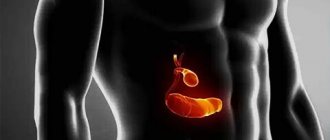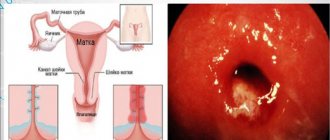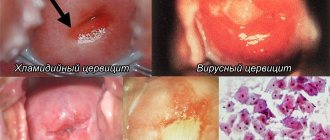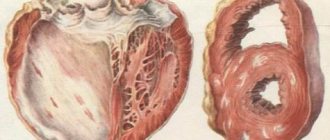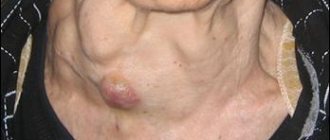General information
Myalgia - what is it? Myalgia is a syndrome manifested by spontaneous muscle pain during physical stress/rest or caused by external influences (active/passive movements in the joints, palpation). Muscle pain can be either local, for example in the thigh muscle of the leg, or diffuse (muscle pain throughout the body). Myalgia is often accompanied by joint pain ( arthralgia ).
Functional muscle diseases, occurring with pain of varying severity, can occur in healthy people after unusual (hard) physical work or often in athletes during overtraining. In such cases, there may be compaction of the muscles that have been overloaded and their moderate swelling. Myalgia can develop after injuries, or sharp pain can appear with convulsive contraction of certain muscle groups, for example, in the calf muscle when walking with intermittent claudication. Pain in the muscles of the legs, neck and back is especially common.
At the same time, myalgia can also be one of the manifestations of a number of diseases ( polymyalgia rheumatica , infectious diseases, vascular pathology, diseases of the joints and visceral organs, etc.), autoimmune pathologies, or caused by the action of toxic/medicinal substances. Myalgia ranks second in prevalence, second only to headaches, and over 48% of all pain syndromes are of muscular origin. As a rule, with a minor muscle injury/physical overload of the muscles, the pain syndrome regresses spontaneously within 2 days, however, in some cases, myalgic syndrome persists with the threat of developing chronic myofascial pain syndrome (MPS), in which fascia and tendons are involved in the process of formation of persistent pain in addition to muscles . The syndrome is often characterized by chronic muscle dysfunction (muscle stiffness and localized pain).
Since pain is not a specific nosological form, objectively interpreting myalgic syndrome in clinical practice with determining its nosological affiliation is a rather difficult task, since it is characteristic of various infectious, neurological, endocrinological and systemic rheumatic diseases and has similar clinical manifestations with them.
Preventive measures
Prevention of myalgia includes:
- avoiding excessive physical activity (especially untrained muscles), as well as traumatic injuries or strains of muscle fibers;
- treatment of inflammatory diseases and neurological disorders with chronic destruction of muscle tissue (atrophy, amyotrophic lateral sclerosis);
- correction of polyneuropathy, myasthenia gravis and vascular pathologies (varicose veins, thrombosis, etc.);
- control of congenital metabolic disorders or imbalance of ionic composition (decrease in the concentration of Ca2+, K+, etc.);
- normalization of hormonal disorders (diabetes mellitus, increased function of the thyroid or parathyroid glands, increased growth hormone);
- elimination of side effects from taking drugs (statins) or the toxic effects of alcohol and other drugs on the body.
Remember, myalgia is a symptom of pathological processes occurring directly in the thickness of the muscle. For this reason, without proper treatment, complete loss of function of the affected muscle bundles is possible!
Classification
The classification is based on various criteria, according to which the following are distinguished:
- According to pathological changes in the muscular-ligamentous apparatus: fibromyalgia (primary/secondary), myositis (polymyositis), epidemic myalgia .
- According to the nature of the course: acute, chronic.
- According to the location of pain: localized, diffuse.
- According to the level of the CPK enzyme (creatine phosphokinase) in the blood: with an increase in CPK activity and without a change in the level of CPK.
Diagnostics
It is impossible to diagnose this disease by symptoms alone, even preliminary. The mandatory diagnostic program uses both laboratory and instrumental methods:
- general, biochemical blood test;
- Ultrasound of muscles;
- muscle strength study;
- CT head;
- examination of the neck and joints.
Ultrasound examination of muscles
Only a complete diagnosis makes it possible to accurately diagnose and prescribe the correct treatment.
Causes of myalgia
Myalgia can be a consequence of a number of reasons, the main of which are:
- Injuries (domestic, sports, industrial) with damage to one or another muscle group, causing sharp muscle pain, for example, sharp pain in the calf muscle when jumping high.
- Physical overload (overwork). They are typical for athletes, but often occur in everyday life after unusual heavy physical work, in which the load falls on muscles that are usually little used.
- Long-term static loads (staying in one position).
- Hypothermia, especially being in a draft.
- Severe stress with emotional breakdowns.
- Long-term use of certain medications ( penicillins , diazepam , L-tryptophan , calcium gluconate , clofibrate , nifedipine , clonidine , statins etc.).
- Infectious/parasitic diseases ( neuroinfections , influenza , trichinosis , cysticercosis , toxoplasmosis ).
- Vascular diseases ( atherosclerosis ) are common causes of pain in the calf muscles, for example with intermittent claudication.
- Metabolic disorders ( diabetes , amyloidosis , glycogenosis , etc.).
- Rheumatic diseases, such as periarteritis nodosa , systemic lupus erythematosus , rheumatoid arthritis , scleroderma , polymyalgia rheumatica , which cause muscle pain throughout the body.
- Intoxication (lead, alcohol, carbon monoxide).
- Lack of potassium/calcium in the body.
- Dermatomyositis / polymyositis .
- Osteochondrosis.
Why do they arise?
The most common causes of muscle pain are:
- excessive physical activity (especially untrained muscles);
- traumatic lesions or sprains of muscle fibers;
- inflammatory diseases (myositis due to viral, bacterial and parasitic infections);
- neurological disorders with chronic destruction of muscle tissue (atrophy, amyotrophic lateral sclerosis);
- polyneuropathy – multiple lesions of peripheral nerves;
- myasthenia gravis – “muscle weakness”;
- vascular pathologies (varicose veins, thrombosis, etc.);
- congenital metabolic disorders or imbalance of ionic composition;
- hormonal disorders (diabetes mellitus, increased function of the thyroid or parathyroid glands, increased growth hormone);
- a side effect from taking drugs that reduce the concentration of fats in the tissues and fluids of the body (the so-called statins - Lovastatin, Atorvastatin);
- toxic effect on the body of alcohol, medications, etc.
Symptoms of myalgia
The main manifestation of myalgia (fibromyalgia), myositis, myofascial syndrome is pain of varying severity and localization. The pain can be constant at rest or intensify with palpation of the muscle or during movement (especially when walking). In addition to pain, symptoms of the disease may include muscle tension and joint stiffness, headache , and fever. Symptoms of myalgia can vary significantly depending on the type of myalgia.
Fibromyalgia . It is characterized by diffuse muscle pain in often symmetrical specific areas of the body, or the pain can be diffuse in nature when patients complain of pain throughout the body. In addition to muscle pain, patients experience the following symptoms: increased fatigue, depressive disorders , insomnia , anxiety , and weather dependence . The pain may intensify due to increased stress, under the influence of dampness/cold. The pain syndrome is most often localized in the occipital, cervical, lumbar and shoulder regions, and with diffuse pain syndrome in certain areas of the trunk or lower extremities (in the leg muscles above the knee or pain in the calf muscle).
Myofascial syndrome . It is characterized by a pronounced chronic muscle pain syndrome and the formation of specific painful compactions in the muscles, the so-called trigger points, which mean an area of hyperirritability localized in a compacted muscle cord or fascia, the irritation of which is manifested by local and referred pain in an area that is remote from such a point. That is, when pressing on the TT, acute local pain appears, accompanied by shuddering, as well as pain that radiates to a distant, strictly defined area (referred pain). Under favorable conditions, TT can regress on its own within 3-5 days, but under unfavorable conditions (muscle stress, hypothermia), the duration of the disease can last up to a year. In addition to pain, there may be a limitation in range of motion, impaired sensitivity, and, less commonly, autonomic dysfunction. Referred pain from certain active myofascial trigger points has its own distribution pattern.
Myositis/polymyositis . Myalgia of inflammatory origin in most cases is a complication of various diseases. Myositis usually affects a specific muscle group, and in the presence of many foci of inflammation we are talking about polymyositis. Often the process involves not only muscle tissue, but also the skin (dermatomyositis). The leading symptom of acute myositis is severe pain in a certain muscle group (lower leg, neck, lower back, chest), which intensifies during movement, when pressing on the area of the affected muscles, or when the weather changes. In chronic myositis, the nature of the pain is predominantly aching and there is constant muscle weakness. Swelling and redness of the skin at the site of inflammation is less common. Due to the protective reaction of the muscles, the work of the joints is limited with the frequent development of arthritis . Polymyositis is characterized by general muscle weakness, which often leads to muscle atrophy. The patient complains that it is difficult for him to raise his head, stand up, or take something in his hand.
Treatment
Therapy for myalgia should be timely, comprehensive, and most importantly, require consultation with a medical specialist.
- First of all, it is necessary to find out the etiology of myalgia and eliminate it.
- Symptomatic treatment of myalgia with medications is aimed at eliminating the painful syndrome and inflammation in the muscles using anti-inflammatory drugs, analgesics and sedatives.
The use of NSAIDs is both symptomatic and pathogenetic treatment (it stops inflammation and is able to relieve pain).
- Diclofenac;
- "Meloxicam";
- "Indomethacinum";
- "Ibuprofenum";
- "Ketoprofenum".
NSAIDs can be taken either orally or parenterally (intramuscularly).
For a quick analgesic effect, local therapy in the form of medicinal ointments is recommended. The most effective:
- Finalgon;
- Fastum gel;
- Menovasan;
- Viprosal B;
- Capsicam.
Taking sedatives is necessary if the cause of myalgia is nervous overstrain. Doctors prescribe sedatives to patients. For example, the drug novo-passit.
Physiotherapy is an integral part of the treatment of myalgia. Warming, treatment with magnets, reflexology, electrophoresis, irradiation, and SMT are indicated for patients.
List of sources
- Shostak N. A., Pravdyuk N. G., Novikov I. V., . Trofimov E. S. Myalgia in therapeutic practice – approaches to differential diagnosis, treatment // Attending physician. No. 3 p. 21-24.
- Ivanichev G.A. Pathogenetic aspects of the formation and manifestation of classical muscle pain syndromes. Manual therapy. 2009; 3 (35): 3–12.
- Busheneva S.N., Kadykov A.S., Piradov M.A. Myofascial syndrome: from theory to practice. Russian medical journal. 2005; 22. p. 57-62.
- Godzenko A.A., Badokin V.V. Local therapy of myofascial pain syndrome. RMJ. Rheumatology. 2007; 26: 1998–2003.
- Osipova N. A., Abuzarova G. R., Petrova V. V. Principles of using analgesics for acute and chronic pain. Clinical recommendations. M.: FSBI “MNIOI im. P. A. Herzen” Ministry of Health and Social Development of Russia, 2010. 67 p.
Possible complications and consequences
If a person has been diagnosed with myalgia, then he should begin a therapeutic course as soon as possible, strictly following the recommendations of the attending physician. Otherwise, there is a possibility of encountering complications:
- intervertebral hernia;
- degenerative processes of joints and bones (arthralgia);
- formation of concomitant pathologies of organs and systems;
- osteochondrosis.
Since myalgia develops at any age, it can also appear in a child. To identify muscle dystrophy in children, you need to carefully monitor his movements. Govers' symptom is observed - a typical technique, as a result of which the child “steps” his hands along the front surface of the legs to create a vertical position.
PROVEN MEANS
TINcture OF LILAC FLOWERS
It is better to use white lilac. Take 2-3 tbsp. flowers, pour 300 ml of alcohol or vodka and leave in a dark place for 7-10 days, then strain. Use to rub pain points 3-4 times a day.
BAY OIL
Take 3 tbsp. l. crushed bay leaves, pour in 200 ml of vegetable oil and leave for a week and a half. Rub into sore areas in the morning and before bed.
CABBAGE LEAF
Lather one side of the cabbage leaf with regular laundry soap and sprinkle with baking soda. Apply the sheet to the sore spot at night with the clean side, secure and wrap.
RED PEPPER
Take two pods of red hot pepper, finely chop and mix with 300 ml of ammonia. Leave for 14 days in a dark place, shaking daily. Use as a rub for sore muscles.
BLACK RADISH
Take 1 tbsp. black radish juice, 1/2 tbsp. honey and 2 tbsp. l. vinegar. Mix well in a glass jar, close the lid tightly and let it brew for 5 days. Before use, lubricate the sore areas with vegetable oil and make a compress from the resulting mixture for 30-40 minutes.
After this, thoroughly wipe the lubricated area and wrap it warmly overnight. The course of treatment is 10-12 procedures.


